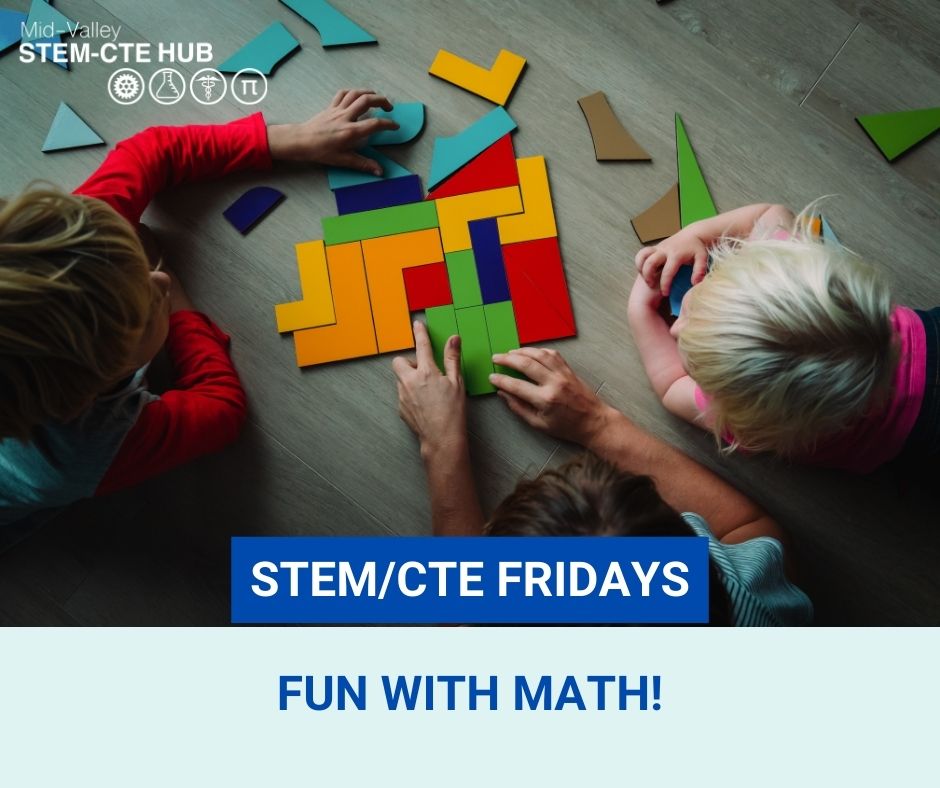You read correctly, that was not a typo – today’s #STEMCTEFridays post really is all about having fun with math! More than any other school subject, math teachers hear the same question over and over: “When will I ever use this?” Honestly, it’s a very valid question because the way math is taught in school has very little resemblance to how math is used in real life. When students begin having difficulty learning and excelling at math, many of them develop “math anxiety.” Math anxiety can stay with a child all the way into adulthood. There’s a reason some parents cringe when their child asks for help with their math homework! We’re hoping that some of these activities and resources we are sharing can show parents and students that math can be fun and that it can be taught in a way that makes it relatable for them.
How does math help in the real world?:
- Math helps you build things;
- Math is in the grocery store;
- Math makes baking and cooking fun;
- Math takes the risk out of travel;
- Math helps you save money;
- Math lets you manage time.
Source: Imagine Learning
Activities & Games:
- Go to your local Home Depot on a day they’re giving away the building kits for children. They usually have a different kit every month. Use those kits as way to teach math-related skills such as measuring, estimating, angles, and following instructions.
- Buy a Yahtzee game and have your students do the math themselves. They’ll work on their addition and multiplication as well as learn about probability.
- Make going to the grocery store a math challenge! Encourage your student to estimate the total cost of all groceries prior to checkout. For a greater challenge, encourage students to incorporate coupons, sales, and adjusted pricing for bulk items. You can also show them what a budget is and what it’s important for managing finances.
- Have your child make a map of your home. You can even show them how to measure the size of rooms so they can make their map to scale. Once their map is done, ask them to figure out the quickest way to leave their home if there’s an emergency. They can compare different routes and figure out which way is the best. Look online for map building maps to incorporate some computer skills into the project.
- Can you solve the sea monster riddle? Check out this ED-TED activity from their Math in Real Life series.
- Prodigy connects in-class learning to at-home math practice. Make us your go-to platform for effective blended and virtual learning. The best part? It’s free. Learn more here.
Further learning & resources for you below:
- Who doesn’t love LEGO? You already know we do. Well LEGO is a great tool for teaching math. Check out this site and try out all the ways LEGO can be used to teach and build math skills.
- From rockets to stock markets, many of humanity’s most thrilling creations are powered by math. So why do kids lose interest in it? Conrad Wolfram says the part of math we teach — calculation by hand — isn’t just tedious, it’s mostly irrelevant to real mathematics and the real world. Watch his TED Talk here.
- More resources from Education World that offer a page worth of real world math activities.


